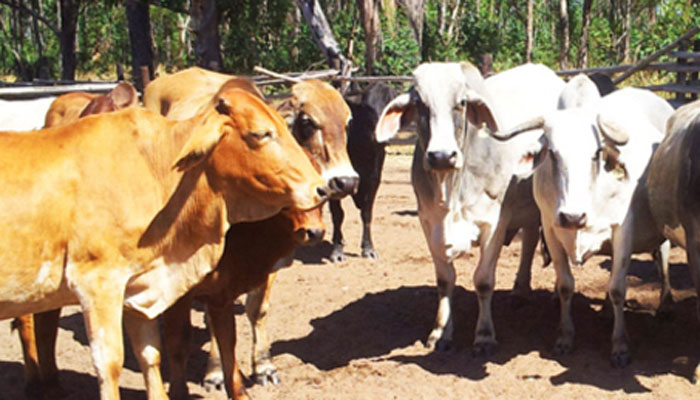
The Sunday Mail

Sharon Munjenjema
Government’s drive to replenish the national cattle herd as part of an elaborate effort to boost both the dairy and beef industry is being significantly pushed back by rising incidence of Theileriosis, or January Disease, a tick-borne infection that claimed 50 000 cattle last year.
The disease, which is caused by the brown ear-tick that usually thrives during the rainy season, is indiscriminate, affecting communal and A1 farmers.
Ordinarily, while dipping is considered effective in fighting the scourge, foreign currency shortages — worsened by rising competing demands —are making it increasingly difficult to import dipping chemicals.
Government needs an estimated $8,2 million to administer anthrax and foot-and-month disease vaccines annually.
Farmers in the affected areas are either failing to dip their cattle or dipping them in chemicals whose concentration is considered suboptimal.
Principal director in the Department of Veterinary Services (DVS) Dr Unesu Ushewokunze-Obatolu told The Sunday Mail recently that local companies are not taking the initiative to manufacture the vaccines locally.
“2018 experienced high death rates among communal and A1 cattle in Theileriosis hotspots. Upwards of 50 000 herds were lost to this disease in the 2017-2018 summer.
“When dipping of cattle is effective, the disease disappears. Dipping failure occurs when animals miss treatment because the chemical is unavailable … (or) due to dipping concentration being suboptimal,” she said.
Local production
However, Government plans to scale up local production of the much-needed vaccines.
“Local industry has not yet taken the opportunity to venture into animal disease vaccine production, and most animal vaccines are imported.
“The Department of Veterinary Services hopes to begin incubating production of a range of animal disease vaccines in 2019. Presently, DVS produces a weak, but highly protective strain of Newcastle virus vaccine and vaccines against three cattle tick-borne diseases,” said Dr Ushewokunze-Obatolu.
Government, through an ambitious plan outlined in the Transitional Stabilisation Programme (TSP), intends to improve the size and quality of the national herd.
A $440 million facility backed by the private sector has since been put in place. Of the total resource envelope, $200 million will be committed to the beef and dairy sector, $42 million to poultry, $11 million to sheep and goats, and $30 million for piggery projects.
In order to track cattle movements and prevent stock theft, Government is also considering electronic ear tagging to the dip tanks of origin.
Furthermore, $25 million will be mobilised towards construction of dip tanks in unserviced areas, including maintaining the existing assets.
Beef cattle and dairy
Government is also doubling efforts to resuscitate the beef and dairy sector to meet domestic demand and export requirements.
TSP estimates that $63 million is needed to revive beef cattle production, of which $32 million would be for restocking.
It is envisaged that the exercise will involve providing heifers to farmers in predominantly livestock-producing areas and drier provinces such as Matabeleland North and South, and southern parts of Manicaland, Masvingo and Midlands.
Similarly, the Dairy Revitalisation Programme targets increasing the dairy herd to double the country’s raw milk production from 67 million litres in 2017 to 131 million litres within four years.
National milk demand presently stands at 120 million litres.
However, the country’s national dairy herd stands at 28 000 cows, down from a peak of 122 000 cows during the 1990s.
Zimbabwe imports about 60 percent of its milk requirements.
But Government’s resolve to capacitate local livestock farmers is quite apparent.
As at August 28 last year, 844 heifers had been distributed in Matabeleland North province, while 1 384 heifers were distributed in Matabeleland South.
In addition, a new artificial insemination technology with the capacity of producing 4 000 bull semen straws an hour will be commissioned soon.
The project, which is being spearheaded by the Chinhoyi University of Technology, will complement the Command Livestock Programme.
Disease control
It is believed that successfully pursuing the planned projects involves effectively dealing with the threats of animal diseases.
The Department of Veterinary Services said last week a new case of foot-and-mouth had been reported in Mashonaland Central for the first time.
Some animals in the province reportedly cross into neighbouring Mozambique to graze, where they usually come into contact with infected buffaloes.
But Government is already fencing some areas in order to separate them from national parks and also control animal movement.
About 60 kilometres of the 240-kilometre fence around Gonarezhou National Park has been fenced under the Livestock Special Programme.
In line with global commitments, DVS will also strive to eliminate dog-mediated human rabies; PPR (Peste des petits ruminants) or goat plague; and dedicate efforts to control foot-and-mouth disease.



